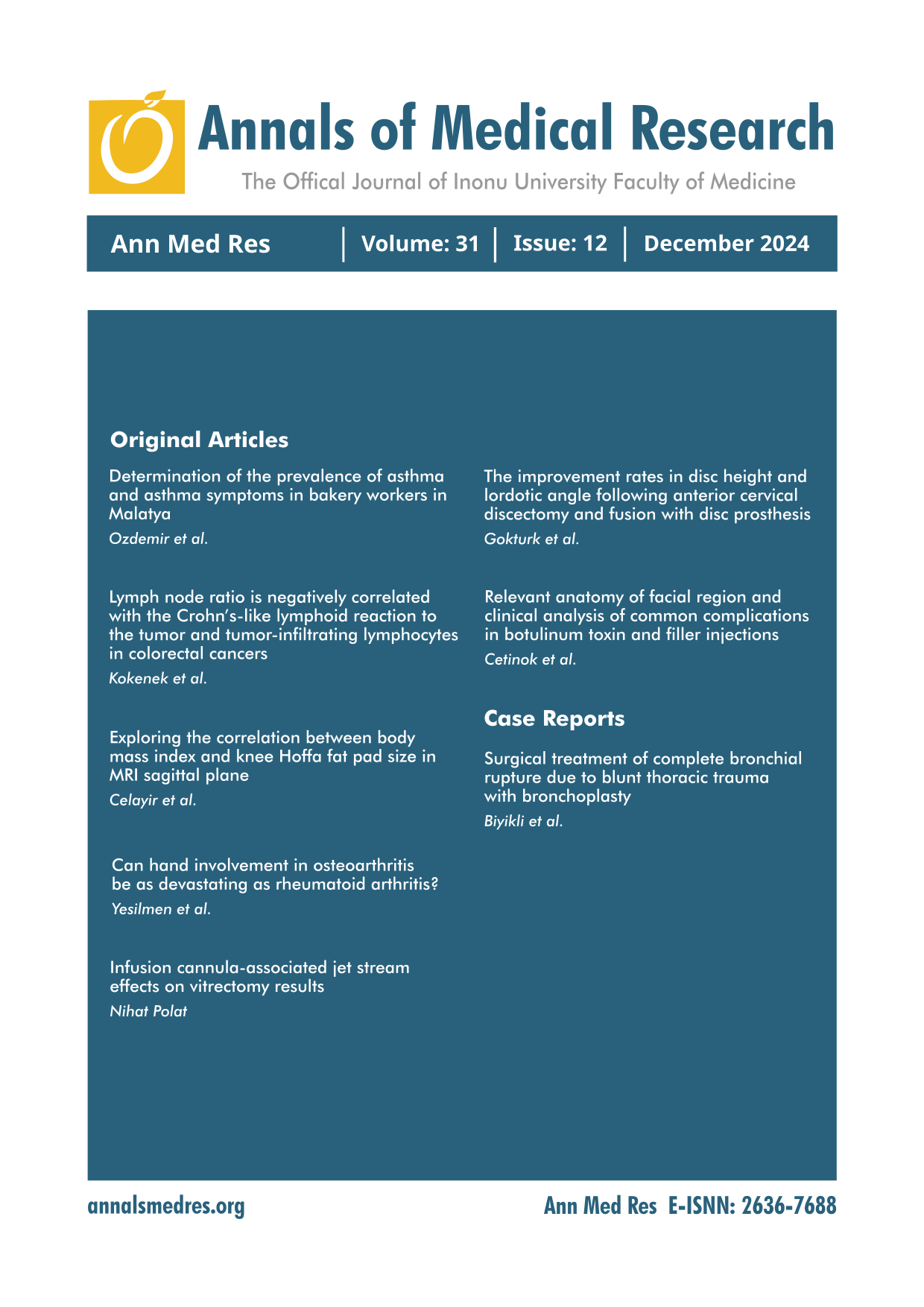Exploring the correlation between body mass index and knee Hoffa fat pad size in MRI sagittal plane
Keywords:
Hoffa fat pad, Body mass index, Orthopaedic surgeryAbstract
Aim: The relationship between body mass index (BMI) and knee Hoffa fat pad size has garnered increasing attention due to its potential implications in orthopedic pathology. This study aimed to explore the correlation between BMI and Hoffa fat pad size as measured on MRI sagittal plane images.
Materials and Methods: A retrospective analysis was conducted on MRI scans of the knee joint from a cohort of patients. Sagittal plane images were reviewed, and the size of the Hoffa fat pad was measured using standardized techniques. BMI data were collected from patient records. Correlation analysis was performed to assess the relationship between BMI and Hoffa fat pad size.
Results: A total of 60 MRI scans were included in the analysis. The mean BMI of the cohort was Y 29.7990. The mean size of the Hoffa fat pad was 29.7990. The age range was between 45 and 75. Correlation analysis revealed a statistically significant positive correlation between age and Hoffa fat pad size (p < 0.05). Specifically, as age increased, there was a corresponding increase in the size of the Hoffa fat pad.
Conclusion: This study provides evidence of a positive correlation between age and Hoffa fat pad size as observed on MRI sagittal plane images. No significant relationship was found between body mass index and Hoffa fat pad size. Further research is warranted to elucidate the underlying mechanisms and clinical implications of this relationship.
Downloads
Published
Issue
Section
License
Copyright (c) 2024 Annals of Medical Research

This work is licensed under a Creative Commons Attribution-NonCommercial-NoDerivatives 4.0 International License.
CC Attribution-NonCommercial-NoDerivatives 4.0






